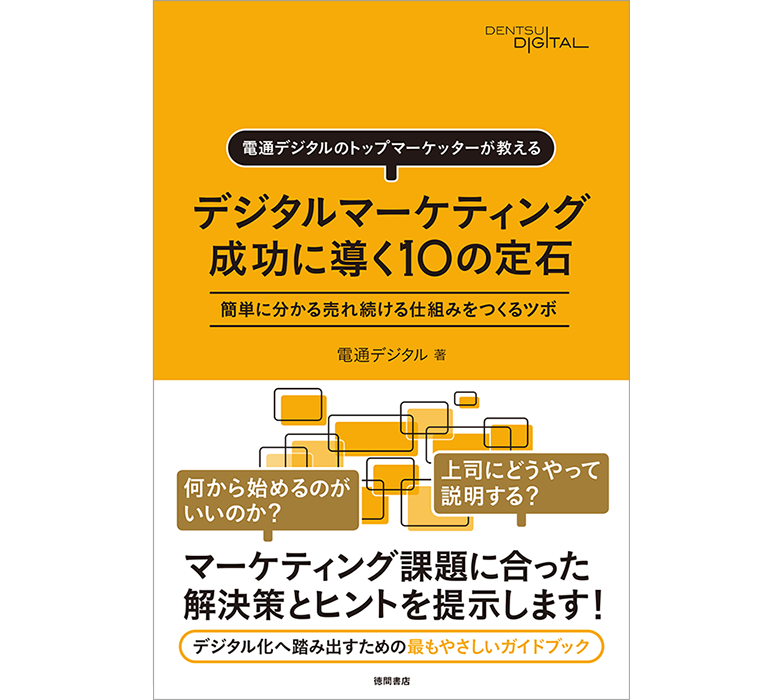This series commemorates the release of the book published by Dentsu Digital Inc., '10 Essential Principles for Digital Marketing Success: Creating a Mechanism for Sustained Sales – Easy-to-Understand Insights from Dentsu Digital Inc.'s Top Marketers'.
Part 2 features an excerpt from "Condition 2: Start by Strengthening Owned Media to Maintain Constant Interaction with Consumers," specifically the section on "Requirements for a Good Website."
Requirements for a Good Website
The most important thing for a website is that it is "easy to find." No matter how well-made a website is, if no one knows about it, no one will visit. For it to function as a communication tool, customers need to "come to you."
The key strategy to achieve this is to implement robust SEO (Search Engine Optimization) measures. This involves structuring your website so that when customers search online for information they need, search engines recognize your site's content and display it prominently in search results. To ensure your website appears highly in search results, it's common to run paid search (search-linked) ads alongside SEO efforts.
While SEO measures take time for search engines to fully evaluate and rank your site higher, paid search ads provide immediate visibility. Furthermore, SEO relies on search engines for placement and content on results pages, whereas paid search ads allow you to control these aspects. Of course, paid search ads incur costs as they are advertisements. Depending on your advertising budget, if running paid search ads long-term is difficult, consistent SEO efforts become essential.
The success of SEO efforts can be judged by website traffic (usage) metrics. Commonly used indicators include PV (Page Views) and UU (Unique Users). The former represents the number of times pages were viewed, while the latter indicates the net number of distinct visitors after removing duplicates (both within the specified tracking period). Next, a website must be "easy to view." Readability is significantly influenced by factors like font size, line spacing, and color schemes. While adopting universal design to accommodate diverse users is fundamental, it's also crucial to "guide" visitors by clearly indicating where information is located (layout).
Especially when visitors seek different information (content), it's considerate to segment user needs and display segment-specific navigation on the homepage. This suggests the next action to reach their desired information, preventing them from giving up and leaving midway.
This relates to the website's "usability." It's important to ensure the same visual appearance and user experience (multi-device compatibility) regardless of the device used for access, whether it's a PC, smartphone, or tablet.
Furthermore, the overall information architecture of the site impacts usability. Grouping information (content) by category and organizing it hierarchically from broad to narrow classifications helps guide customers without confusion. Clearly indicating the user's current location (page) within the site prevents hindering free navigation.
Furthermore, once users reach their target information, it is crucial that the provided content is easy to understand. Even if users land on a detailed page, if the information is unusable, their purpose remains unfulfilled. It is essential to "explain" the information in a way that satisfies the user.
To deepen understanding, various approaches are needed: supplementing text with images or video, rearranging information order, considering layout, and more. Above all, ensure the content itself is complete.
Figure: Conditions for a Good Website






